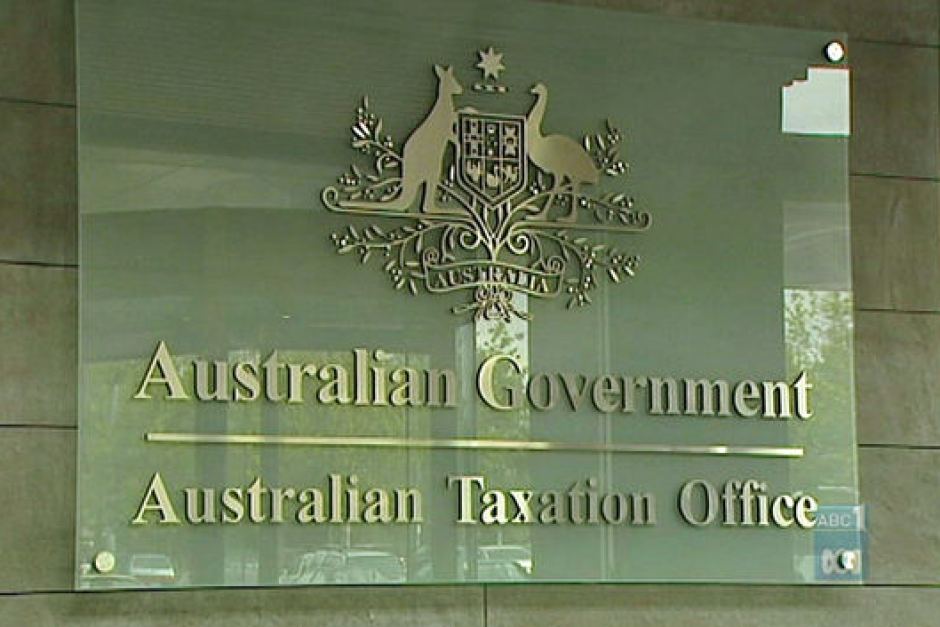John: So, where do franking credits come from?
Peter: The ATO, that’s where franking credits are born … think about franking credits like a gift voucher.
Brenda: Shop vouchers never pay out cash … but, since John Howard changed the rules, franking credits do. Pretty good vouchers! No wonder people want them.
Peter: Spot on, Mum. And the ATO is well aware that they may have to pay out cash when someone redeems a franking credit. The cash the ATO got from the sale of the franking credits to CBA may never go to fund a hospital or a road. It might go to you, Mum, in cash.
John: So the government can never use that part of CBA’s tax?
———–
In this, Episode 5 of The Kitchen Table series on franking credits, we examine the facts of life, how franking credits are made.
John and Brenda want to know where franking credits come from and where they go. They have noticed that foreigners are not treated the same as Australians when it comes to franking credits. And the benefits to Australians seem to depend on their marginal tax rate.
Mrs Baker has started to explain the small business view about owning companies. But others see things from the perspective of investors in ASX-listed companies.
Brenda’s son Peter has looked into it and has lately started to think about it in terms of the franking credit factory.
But why does Qantas sometimes pays unfranked dividends? Hmm.
_________________________________________________________________________
Sitting around the kitchen table
John: I think we’d all like to know more about these franking credits. Some people seem to master it and others, like us, struggle to get to grips with the ideas.
Brenda: And I’ve seen from our other chats that one CBA dividend and one set of franking credits gives half a dozen different yields depending on who you are. Is it the same for every company?
Peter: Yes Dad. It’s the same for BHP, Rio Tinto, National Australia Bank, ANZ, Westpac. These numbers are the same for every company that pays 100 per cent franked dividends.
Fully Franked Dividends – What You Get
| Steve (45% marginal tax): | 78.6% of the dividend |
| David (37% marginal tax): | 90.00% |
| John (32.5% marginal tax): | 96.40% |
| Susan (zero withholding tax): | 100% |
| Company pays: | fully franked dividend |
| Brenda (19% marginal tax): | 115.00% |
| Mr G’s accumulating super (15% tax): | 121.50% |
| Penny’s pension SMSF (zero tax): | 142.8% of the dividend |
Brenda: And the same rules apply to Penny Baker’s private company, Dough Makers Warehouse Pty Limited? Not just to ASX companies, right Peter?
Peter: Yes Mum, so long as they pay 100 per cent franked dividends. It doesn’t matter if they’re big or small, listed or “mum-n-dad” companies. The maths is the same.
John: So, tell me the facts of life, son. Where do franking credits come from?
The franking credit factory
Peter: The Australian Tax Office is the start and the end of the story. That’s where franking credits are born. And that’s where a lot of them die. The ATO issues brand new franking credits to companies which pay Australian tax. Dollar for dollar. Very few exceptions.
John: So how does that work?
Peter: For every dollar a company pays in tax it gets a franking credit. One way to think about it is: companies buy franking credits from the ATO.
The ATO is one big franking credit factory. It’s the only one allowed to make them. It’s a one-stop-shop: tax in, franking credits out.
Brenda: So what do companies do with their franking credits?
Peter: They stockpile them.
Brenda: Okay, I can imagine that. I can see the stockpiles. CBA has one. Woolworths has one. So does BHP. They all pay tax. So, they have stockpiles.
John: And what’s the best way to think about a franking credit?
Peter: Think about it as a voucher. Like a gift voucher. You pay a shop $50 and you get a gift voucher. You can give it to somebody, say, for their birthday. And they go to the shop and get $50 worth of whatever the shop sells.
Brenda: But shop vouchers never pay out cash. They always say that in the fine print. But since John Howard changed the rules, franking credits do. Pretty good vouchers! No wonder people want them.
Franking credits: if you’re old enough to understand super, you’re too late
Peter: Spot on, Mum. And the ATO is well aware that they may have to pay out cash when someone redeems a franking credit. The cash the ATO got from the sale of the franking credits may never go to fund a hospital or a road. It might go to you, Mum, in cash.
John: So the government can never use that part of CBA’s tax. Are you saying that these franking credit vouchers don’t have an expiry date?
Peter: Seems not. A company’s stockpile rolls forward year after year. The Commonwealth Treasury is watching what goes on. It says that, as time goes by, the stockpiled franking credits lose value, as inflation chips away at them.
Brenda: So, meanwhile, there are franking credits sitting in these stockpiles, slowly losing value. But then we get them from CBA, tied in with our dividends. And Uncle Steve and Penny Baker get them. And other people get them from BHP’s stockpile?
Peter: Yes, that’s it. And Penny Baker’s company, Dough Makers Warehouse Pty Limited, it probably had a stockpile too.
John: So who decides to release the franking credits from the stockpiles? Who decides when and how many franking credits get let loose?
Peter: That’s up to the Boards of Directors of the companies with the stockpiles.
Brenda: CBA has 10 directors. And Telstra has 9 directors. It’s those people who decide? Is that right?
Peter: Yes. That’s how it works.
First, the directors decide whether or not to pay a dividend. Second, they decide whether or not to release any franking credits with that dividend. And third, they then get to decide the how many franking credits to release.
It’s up to them. There are some special rules for closely held companies to try to stop any shenanigans.
We’ve already seen CBA’s directors decide to pay a $4.31 dividend this financial year, 100 per cent franked. That’s the maximum franking credits which directors can release. And Qantas’ directors declared 22 cents, 100 per cent franked. But last financial year the Qantas dividend had zero franking.
Qantas and the franking credit factory
John: How come Qantas did not release any franking credits last financial year? Didn’t it have any? Or did the directors decide to keep them?
Peter: Their stockpile was empty. Qantas’ 2017 accounts say it had zero franking credits in its Franking Account. At 30 June 2018 it only had $5 million.
Brenda: But Qantas is a really good company. Surely, it must pay a lot of tax. It should have a huge stockpile. It used to be owned by the government; like CBA, CSL and Telstra. What happened?
Peter: If you go back through its accounts you can see that it had a few bad years; 2012 was bad but 2014 was worse with billions lost.
There’s a sunny side to making a huge loss – Qantas gets a tax holiday.
According to its annual reports, Qantas was able to build up its tax loss account from near zero in 2009 to $3.2 billion by 2014. That gave it a tax holiday from then on, all the way till last year. Pay no tax to the franking credit factory – get no franking credits.
John: Okay. I get it – every company’s different. Some have franking credits. And even very profitable ones, like Qantas, may have none – because they don’t pay tax.
Peter: Correct.
Brenda: So … let’s summarise: it works like this. A company makes a profit. It pays tax. If it does, it gets franking credits. Then the directors decide to pay a dividend. And the directors decide how many franking credits go with that dividend. They pay the dividend and release the franking credits to shareholders. That’s basically it.
Peter: Yes.
Brenda: And the shareholders, that’s us. We go to the ATO and hand in the franking credits. Like gift vouchers. To pay our tax or to get cash … depending on who we are.
Peter: Yes.
Brenda: The franking credits end up where they started – at the franking credit factory.
Peter: Correct. Some never get redeemed, like our foreign Aunty Susan.
John: And if every shareholder was getting franking credit cash, like Penny the franking credit pensioner – the ATO would end up with none of the company tax CBA, BHP, Rio and Telstra pay.
Peter: Yes.
Brenda: And if every shareholder was a foreigner, like Aunty Susan, the ATO could keep all the company tax which CBA, BHP, Rio and Telstra pay.
Peter: Yes.
—————–
Sources: ASX website, APRA website, Australian Taxation Office website, Department of Human Services website, Productivity Commission website, Association of Superannuation Funds of Australia website, Qantas annual reports 2009 to 2018, Qantas website.
—————–
Editor’s note – Qantas’ tax holiday:
How did Qantas get itself a tax holiday? How did it end up with negligible franking credits to release? According to the ATO’s tax transparency data, Qantas had a taxable income of $344 million between 2015 and 2017 and the ATO says Qantas paid no tax.
Qantas’ annual reports suggest an answer.
Qantas discloses that it has been able to build a tax loss account from near zero to over $3.2 billion over the five years between 2009 to 2014 – and to use these tax losses for a tax holiday over the four years from 2015 to 2018.
Over that decade, Qantas did not buy any franking credits from the franking credit factory. One guess is that its few franking credits came from its investments in tax-paying entities outside the Qantas consolidated group.
| QAN | tax loss account balance $m | tax paid $m | franking account balance $m | dividend per share $ | franking |
|---|---|---|---|---|---|
| 2009 | 7 | 0 | 0 | 0.06 | 100% |
| 2010 | 857 | 62 | 18 | 0 | - |
| 2011 | 1157 | 74 | 17 | 0 | - |
| 2012 | 1590 | 0 | 25 | 0 | - |
| 2013 | 1850 | 9 | 84 | 0 | - |
| 2014 | 3240 | 0 | 84 | 0 | - |
| 2015 | 2850 | 0 | 84 | 0 | - |
| 2016 | 1474 | 0 | 84 | 0 | - |
| 2017 | 951 | 4 | 0 | 0.14 | 75% |
| 2018 | 10 | 7 | 5 | 0.14 | 0% |
| 2019 | ? | ? | ? | 0.22 | 100% |
We will have to wait until September 2019 to update this table.
When a company has accounting profits but has paid no tax (and has no franking credits), one way to benefit shareholders is generally thought to be for the company to buy back its own shares, on-market, to the extent that its directors consider that the company has surplus funds and the market price is right.
It also benefits executives, whose performance bonuses are often struck on share price performance.
That’s what Qantas did. As the shares are bought back, the shares are cancelled. This works for Qantas because an on-market buy-back cannot release franking credits. A shareholder whose shares are bought back never finds out that Qantas is the buyer.
Qantas generated $4.8 billion in statutory profits and had a tax holiday from 2015 to 2018. If $1.95 billion of these profits had been used to pay 100 per cent franked dividends, Qantas would have released an additional $820 million franking credits, payable by the government.
But Qantas had paid no tax and had next to nothing in its Franking Account. So instead, Qantas bought back $1.95 billion worth of its own shares at prices ranging between $2.76 and $6.30.
The table above shows Qantas has paid $11 million in tax. Why does the Tax Office say Qantas paid zero? One answer may be that the tax may have been paid outside Australia.
Qantas’ 2017 partially franked dividends came with the note that Qantas has the benefit of “foreign conduit credits”. This enabled it to pay foreign shareholders dividends which were free of dividend withholding tax, despite those dividends not being fully franked.
——-
Next Episode. Peter digs a little deeper. He tries to work out how much company tax the government gets to keep. And finds out how a company’s dividend “payout ratio” is one of the many things which affects the outcome.
Public support is vital so this website can continue to fund investigations and publish stories which speak truth to power. Please subscribe for the free newsletter, share stories on social media and, if you can afford it, tip in $5 a month.
Michael West established Michael West Media in 2016 to focus on journalism of high public interest, particularly the rising power of corporations over democracy. West was formerly a journalist and editor with Fairfax newspapers, a columnist for News Corp and even, once, a stockbroker.



